Mapping the populations of neurotensin neurons in the male mouse brain
- PMID: 31079844
- PMCID: PMC7721284
- DOI: 10.1016/j.npep.2019.05.001
Mapping the populations of neurotensin neurons in the male mouse brain
Abstract
Neurotensin (Nts) is a neuropeptide implicated in the regulation of many facets of physiology, including cardiovascular tone, pain processing, ingestive behaviors, locomotor drive, sleep, addiction and social behaviors. Yet, there is incomplete understanding about how the various populations of Nts neurons distributed throughout the brain mediate such physiology. This knowledge gap largely stemmed from the inability to simultaneously identify Nts cell bodies and manipulate them in vivo. One means of overcoming this obstacle is to study NtsCre mice crossed onto a Cre-inducible green fluorescent reporter line (NtsCre;GFP mice), as these mice permit both visualization and in vivo modulation of specific populations of Nts neurons (using Cre-inducible viral and genetic tools) to reveal their function. Here we provide a comprehensive characterization of the distribution and relative densities of the Nts-GFP populations observed throughout the male NtsCre;GFP mouse brain, which will pave the way for future work to define their physiologic roles. We also compared the distribution of Nts-GFP neurons with Nts-In situ Hybridization (Nts-ISH) data from the adult mouse brain. By comparing these data sets we can distinguish Nts-GFP populations that may only transiently express Nts during development but not in the mature brain, and hence which populations may not be amenable to Cre-mediated manipulation in adult NtsCre;GFP mice. This atlas of Nts-GFP neurons will facilitate future studies using the NtsCre;GFP line to describe the physiological functions of individual Nts populations and how modulating them may be useful to treat disease.
Keywords: Central amygdala; Galanin; Lateral hypothalamus; Nucleus accumbens; Olfactory tubercle; Parabrachial nucleus; Periaqueductal gray; Preoptic area; Thalamus.
Copyright © 2019 Elsevier Ltd. All rights reserved.
Conflict of interest statement
Figures
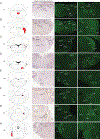
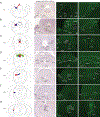

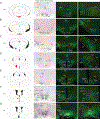
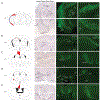

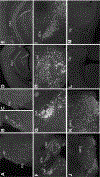

References
-
- Al-Rodhan NRF, Richelson E, Gilbert JA, McCormick DJ, Kanba KS, Pfenning MA, Nelson A, Larson EW, Yaksh TL, 1991. Structure-antinociceptive activity of neurotensin and some novel analogues in the periaqueductal gray region of the brainstem. Brain Res. 557, 227–235. 10.1016/0006-8993(91)90139-M - DOI - PubMed
-
- Alexander MJ, 1999. Colocalization of Neurotensin Messenger Ribonucleic Acid (mRNA) and Progesterone Receptor mRNA in Rat Arcuate Neurons under Estrogen-Stimulated Conditions1. Endocrinology 140, 4995–5003. - PubMed
-
- Alexander MJ, 1993. Estrogen-regulated synthesis of neurotensin in neurosecretory cells of the hypothalamic arcuate nucleus in the female rat. Endocrinology 133, 1809–1816. - PubMed
MeSH terms
Substances
Grants and funding
LinkOut - more resources
Full Text Sources
Molecular Biology Databases
Miscellaneous

